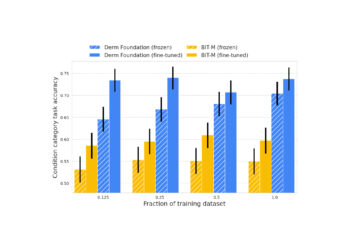I. Introduction: A Shift in Reserve Logic
The largest companies in the world have balance sheets built to weather uncertainty. Their treasuries are designed for stability, liquidity, and scale. Traditionally, this has meant holding large reserves of U.S. dollars, government bonds, or short-duration instruments.
But today’s economic climate is challenging that orthodoxy. Persistent inflation, negative real yields, geopolitical volatility, and growing distrust in long-term monetary policy have turned “safe” assets into a silent liability. The question facing corporate finance leaders is no longer whether to act—it’s when.
And when that action comes from companies like Apple, Microsoft, or Amazon, the implications extend far beyond a single quarterly disclosure. Bitcoin’s design makes it uniquely sensitive to high-quality capital inflows. A single move from one of the Magnificent 7 could reprice the entire market.
II. Quantifying the Baseline: A 1% Allocation Scenario
The Magnificent 7—Apple, Microsoft, Alphabet, Amazon, Meta, Nvidia, and Tesla—collectively hold approximately $483 billion in cash and equivalents. If each were to allocate just 1% of their treasury to Bitcoin, it would represent $4.83 billion in capital flowing into the asset.
At an assumed Bitcoin price of $120,000, this capital would purchase: 40,258 BTC
This figure is not abstract. It represents over 89 days of global Bitcoin issuance at current mining rates (450 BTC per day). It also accounts for more than 1% of the estimated liquid float available on the market.
| Allocation (%) | Capital Deployed ($B) | BTC Acquired | Days of Global BTC Mining Required | % of Liquid BTC Float |
|---|---|---|---|---|
| 1.00% | $4.83B | 40,258 BTC | 89.5 days | 1.01% |
These are material numbers—not just because of the dollar amounts involved, but because Bitcoin cannot expand its supply to meet demand. It has no board of governors, no central bank, and no facility to “accommodate” treasury flows. The only variable that can adjust in response to demand is price.
III. Modeling More Aggressive Allocations
What happens if the reallocation rises to 2%, or 5%?
| Allocation (%) | Capital Deployed ($B) | BTC Acquired | Days of Global BTC Mining Required | % of Liquid BTC Float |
|---|---|---|---|---|
| 0.25% | $1.21B | 10,064 BTC | 22.4 days | 0.25% |
| 0.50% | $2.42B | 20,129 BTC | 44.7 days | 0.50% |
| 1.00% | $4.83B | 40,258 BTC | 89.5 days | 1.01% |
| 2.00% | $9.66B | 80,516 BTC | 178.9 days | 2.01% |
| 5.00% | $24.16B | 201,291 BTC | 447.3 days | 5.03% |
A 5% allocation would attempt to absorb more than 200,000 BTC—an amount greater than what is mined globally in an entire year. It would also consume over 5% of the liquid float. These conditions would strain market liquidity to the point that price would need to move substantially upward simply to clear the order book.
Bitcoin’s architecture rewards early conviction with more coins per dollar. It penalizes delay with rapidly escalating entry costs.
IV. The Role of Signaling
It is important to recognize that corporate treasury strategy is as much about narrative as it is about numbers. The market does not wait for SEC filings or year-end reports. It responds to intent.
A few well-placed remarks during earnings season—a statement from Alphabet about “assessing non-sovereign assets,” or from Amazon referencing “monetary hedging instruments”—would be sufficient to catalyze capital movement. Traders would front-run the announcement. ETFs would accelerate their inflows. Long-term holders would begin withdrawing from exchanges.
The result is a reflexive loop: the mere suggestion of institutional demand contracts available supply, lifts price, and forces others to act more quickly to avoid diminished exposure. This self-reinforcing mechanism is especially powerful when the signal comes from companies that manage hundreds of billions in assets.
Bitcoin is not a stock. There is no issuance curve to smooth capital flow. There is only supply, demand, and an open, permissionless global market that reacts in real time.
V. Peer Dynamics and Strategic Positioning
Tesla’s early entry into Bitcoin (11,509 BTC as of today) gives it a significant strategic edge. If another member of the Magnificent 7 were to follow suit—particularly one with an even larger cash position—it would immediately raise questions among the remaining firms.
At that point, the decision not to act would require active justification to shareholders.
Meta, Amazon, and Nvidia would no longer be assessing Bitcoin in a vacuum. They would be assessing it relative to their peers—peers who are using Bitcoin not just as a treasury reserve, but as a signal of long-term thinking and strategic adaptability.
In this way, Bitcoin adoption among the Magnificent 7 would not resemble gradual diffusion. It would behave more like a tipping point.
VI. Treasury Strategy in a Post-Yield World
For companies with strong balance sheets and limited marginal returns on cash, the opportunity cost of doing nothing is rising.
- Cash earns negative real returns
- Bonds carry reinvestment risk and duration mismatches
- Share buybacks have diminishing impact in a market with declining multiples
- International expansion exposes capital to FX volatility and geopolitical risk
Bitcoin offers none of these liabilities.
It is a non-dilutive, non-sovereign, globally liquid asset that can be held without counterparty exposure. It trades 24/7, settles globally, and is immune to the monetary policies of any single government.
In this light, a 1% Bitcoin allocation functions less like a bet—and more like insurance.
VII. Conclusion: What Conviction Looks Like at the Top
Bitcoin does not need the entire S&P 500 to adopt it in order to reprice dramatically.
It only needs a small number of credible actors—those with the capital, visibility, and influence to reshape narrative and flow.
The Magnificent 7 are uniquely positioned to play this role. With a combined $483 billion in idle cash, even a minor reallocation would have outsized impact on Bitcoin’s market structure.
And once that signal is sent—through words, filings, or visible capital flows—the window for low-cost entry closes quickly. Because in Bitcoin, the supply never increases.
Only the price does.
Disclaimer: This content was written on behalf of Bitcoin For Corporations. This article is intended solely for informational purposes and should not be interpreted as an invitation or solicitation to acquire, purchase, or subscribe for securities.






